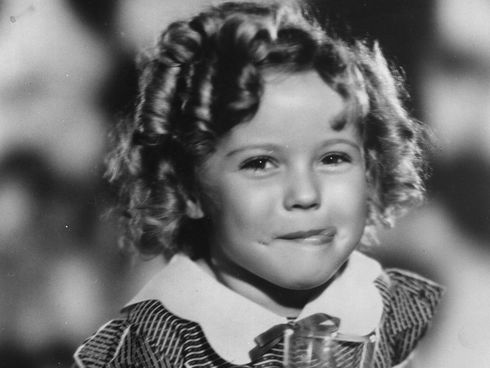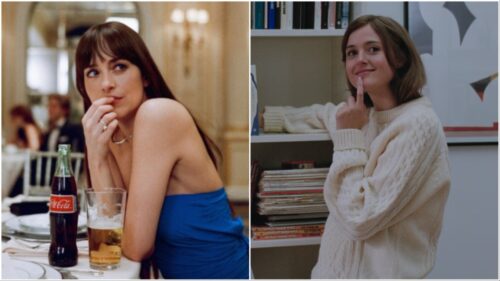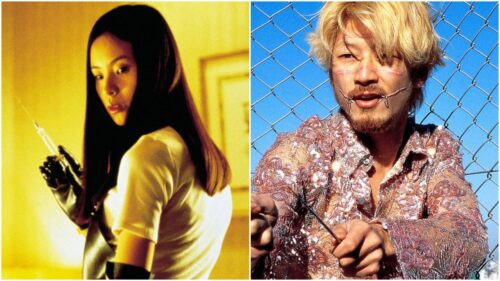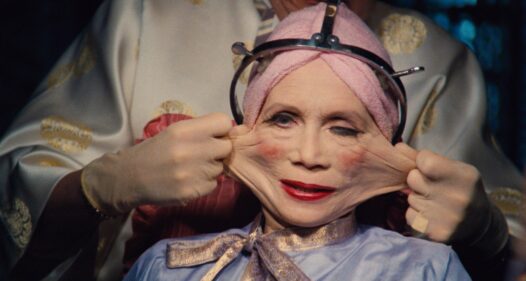“Sparkle, Shirley. Sparkle.”
Those were the instructions Gertrude Temple gave to her daughter Shirley every day on the set. In the early days of the Great Depression, Gertrude had made a decision to turn her daughter’s natural talents to good use. She enrolled Shirley in dance classes. At four, Shirley was ‘discovered’ by a talent agent. Her natural ability to imitate adult stars carried her for the first few years, but her real star power became apparent in 1934’s “Stand Up and Cheer!”, in which she sang “Baby Take a Bow”. Fox put her under contract, and for the next six years, she was one of the biggest box office draws in Hollywood.
Temple practically wrote the script for child stardom. She combined an expressive acting style that captured a child’s oversized emotions with an uncanny ability to mimic adult behaviors. She could burst forth with a smile that suggested somebody had just offered her a toy with the shimmying and come-hither looks that parodied the likes of Dietrich. It’s a strange combination of childlike and adult behaviors that set the mold for precocious screen kids to this day. But for all the cute “little grown-up” moments, Temple could deliver real, heart-wrenching emotion.
And, of course, she could dance. She was charming on her own, but she really shone when she worked as half of a team. It wasn’t just her natural talent that impressed; it was the way she interacted with her partner, clearly enjoying what they did together. Watch her dance with Bill “Bojangles” Robinson in 1935’s “The Little Colonel.”
Hollywood knew a good thing when they saw it. Between the breakthrough role in “Stand Up and Cheer” in 1934 and 1940, Temple made 25 films.
The plots were often the stuff of an earlier era of melodrama mixed with lighthearted moments of singing and dancing. In “Poor Little Rich Girl” she plays a child of wealth who gets lost on her way home from school and gets ‘adopted’ by wandering performers who make her part of the act. In “Bright Eyes” she is an orphan who gets stuck with a horrible family of snobs while her godfather fights for custody. It was all the stuff of “B-pictures,” but Temple elevated the material. With her sweet-as-syrup temperament and her adorable blend of the childish and the adult, she was an idealized version of a kid. And audiences loved it. Her fame inspired dolls and sheet music and other Temple-themed products. Even the Academy Awards got in on the act, honoring her in 1935 with a special “juvenile achievement” Oscar: a miniature version of the distinctive golden statue.
As was often the case with child stars, her transition through puberty and into adulthood was perilous. Her films in the 1940s were nothing to be ashamed of, but the magic was clearly gone. And then she shocked her studio and her fans in 1945 when, at age 17, she married 24-year-old John Agar Jr. The marriage only lasted four years, and shortly after her divorce became final, Temple became engaged to Charles Alden Black. They married after a whirlwind courtship, and remained together until Charles died in 2005.
Shirley Temple Black’s second act was a spectacular turn from show business to work in the non-profit sector and later politics. In the 1960s, she worked with non-profits working for people with Multiple Sclerosis, which her brother suffered from. She became an influential figure in Republican circles. In 1967 she ran for Congress but was defeated by Pete McCloskey. Undaunted, she pursued politics, and in 1969 was appointed by President Nixon to a delegation to the United Nations. Later, she would serve as an ambassador to Ghana and Czechoslovakia.
Shirley Temple Black’s service in government was widely praised, but for many, it is little Shirley Temple, dancing and singing and just bursting with big emotions whom they will miss. Sparkle she did.











